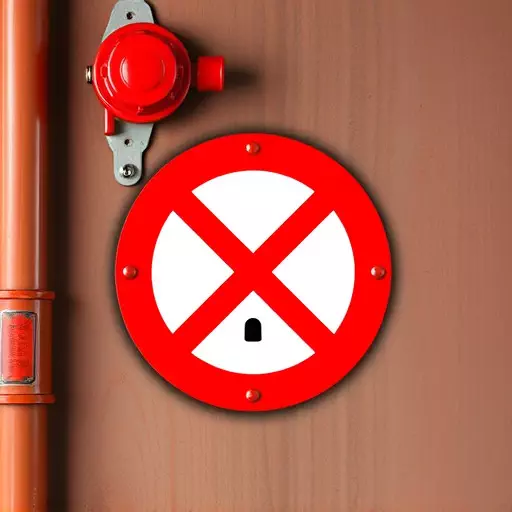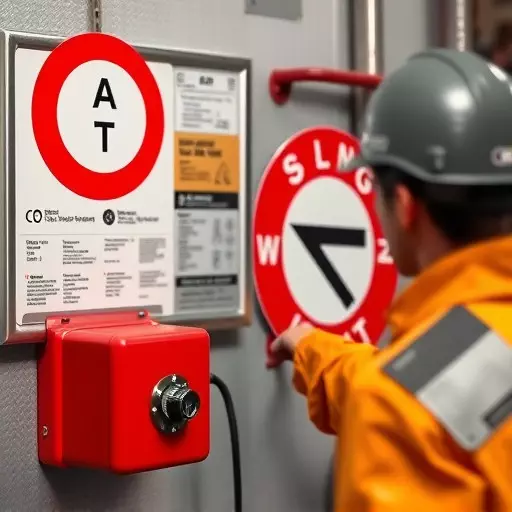Adhering to OSHA's Lockout/Tagout (L/T) standards is vital for industries integrating robotics. These guidelines provide a structured framework for energy control procedures training, empowering workers to safely isolate robotic systems during maintenance using visible tags. Regular L/T compliance training fosters a safety-first culture, significantly reducing workplace accidents related to robotics. Effective lockout tagout compliance training, aligned with OSHA standards, is key to maintaining safe work environments. It involves comprehensive instruction on various energy control procedures and regular refresher courses to minimize risks and promote proactive safety practices among employees.
“Ensuring robotics safety through proper lockout/tagout (L/T) procedures is paramount in today’s industrial landscape. This comprehensive guide delves into the critical aspects of L/T compliance for robots and automated systems. We explore OSHA’s stringent standards and regulations, offering a detailed look at ‘OSHA Lockout Tagout Standards’. Additionally, we emphasize the importance of effective training programs for energy control measures, providing a structured approach to safeguard workers and comply with lockout tagout compliance training requirements.”
- Understanding Lockout/Tagout Procedures for Robotics Safety
- OSHA Standards and Regulations: A Comprehensive Guide
- Implementing Effective Training Programs for Energy Control Measures
Understanding Lockout/Tagout Procedures for Robotics Safety
In the realm of robotics safety, understanding and adhering to proper Lockout/Tagout (L/T) procedures is paramount. These protocols ensure that when maintenance or repairs are needed on robotic systems, the risk of accidents and injuries is minimized. OSHA lockout tagout standards provide a comprehensive framework, detailing energy control procedures training for various industrial settings. Such training equips workers with the knowledge to safely isolate robotic equipment from power sources, preventing unexpected activation during the maintenance process.
The process typically involves tagging out equipment with visible indicators, such as color-coded tags or signs, to communicate its offline status. This simple yet effective method alerts others to avoid interacting with the robot while it’s being serviced. Lockout compliance training goes beyond mere procedure; it fosters a culture of safety awareness and accountability among personnel. By consistently implementing these practices, organizations can significantly reduce the likelihood of workplace accidents related to robotic systems, ensuring both worker safety and regulatory conformity.
OSHA Standards and Regulations: A Comprehensive Guide
OSHA (Occupational Safety and Health Administration) plays a pivotal role in ensuring workplace safety, particularly in industries where robotics and automated systems are employed. The agency has established comprehensive standards and regulations, including specific guidelines for lockout/tagout procedures, to prevent accidents and injuries related to energy control. These standards are designed to protect workers interacting with machinery during maintenance or repair.
The OSHA lockout/tagout standards require employers to implement effective energy control measures, ensuring that all energy sources are properly locked out or de-energized before any work is performed on a piece of equipment. This includes training employees in lockout tagout compliance, emphasizing the importance of adhering to established procedures. Regular energy control procedures training sessions help workers stay updated and prepared to follow these critical safety protocols, thereby minimizing risks associated with robotic systems and similar automated technologies.
Implementing Effective Training Programs for Energy Control Measures
Implementing effective training programs for energy control measures is a critical aspect of achieving and maintaining lockout/tagout compliance. According to OSHA’s lockout tagout standards, workers must be adequately trained on proper procedures to isolate energy sources before performing tasks on equipment. This includes comprehensive instruction on various energy control methods, such as locking out electrical circuits, disabling hydraulic systems, or isolating pneumatic lines. Training should cover not only the technical aspects of each procedure but also practical application scenarios to ensure employees can safely and efficiently implement these measures in real-world situations.
Regular updates and refresher courses are essential to keep up with evolving safety standards and best practices. By providing ongoing education, organizations can reinforce the importance of energy control procedures and address any knowledge gaps among their workforce. This proactive approach not only reduces the risk of accidents but also fosters a culture of safety where employees actively participate in protecting themselves and their colleagues from hazardous energy sources.


